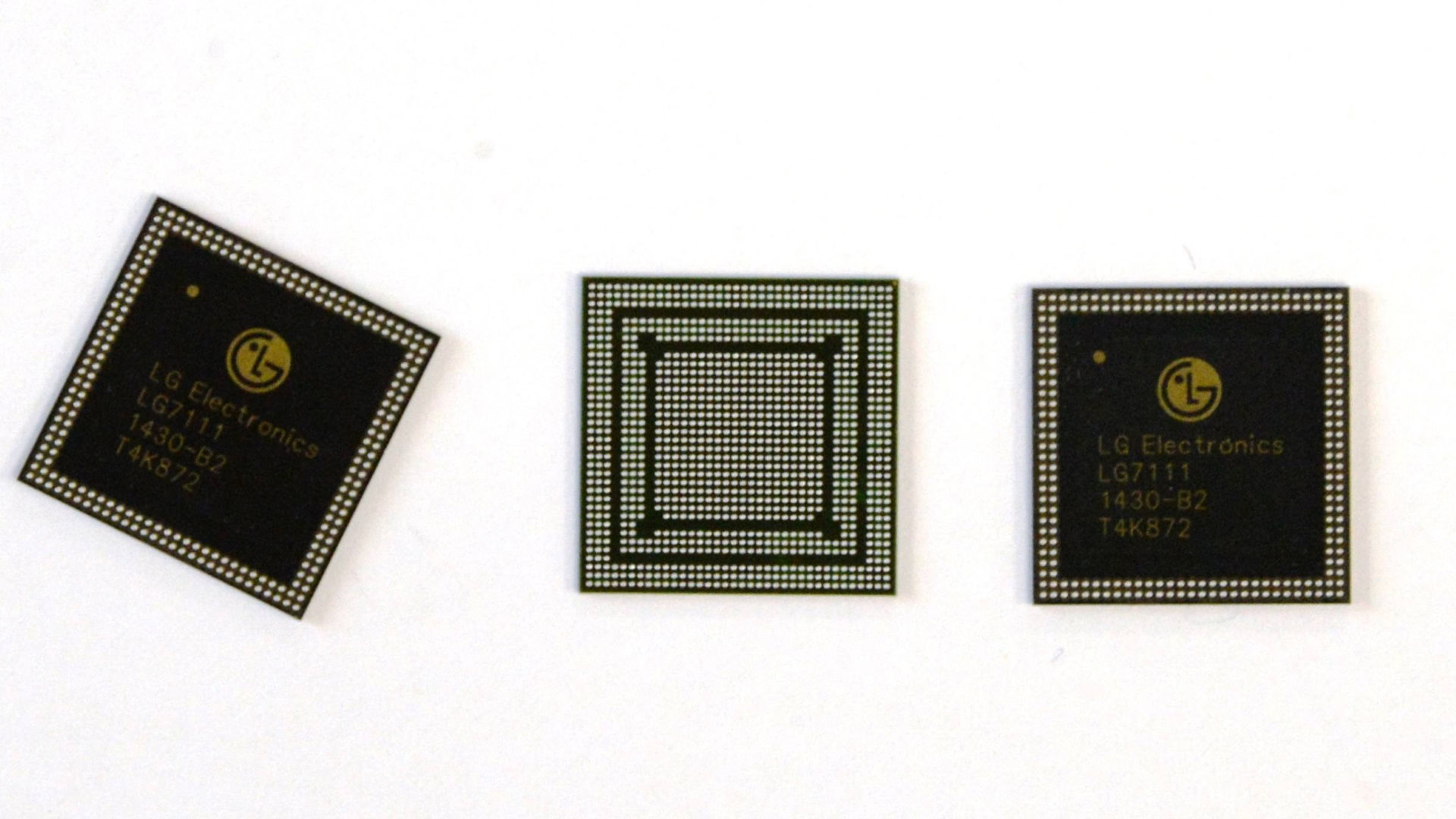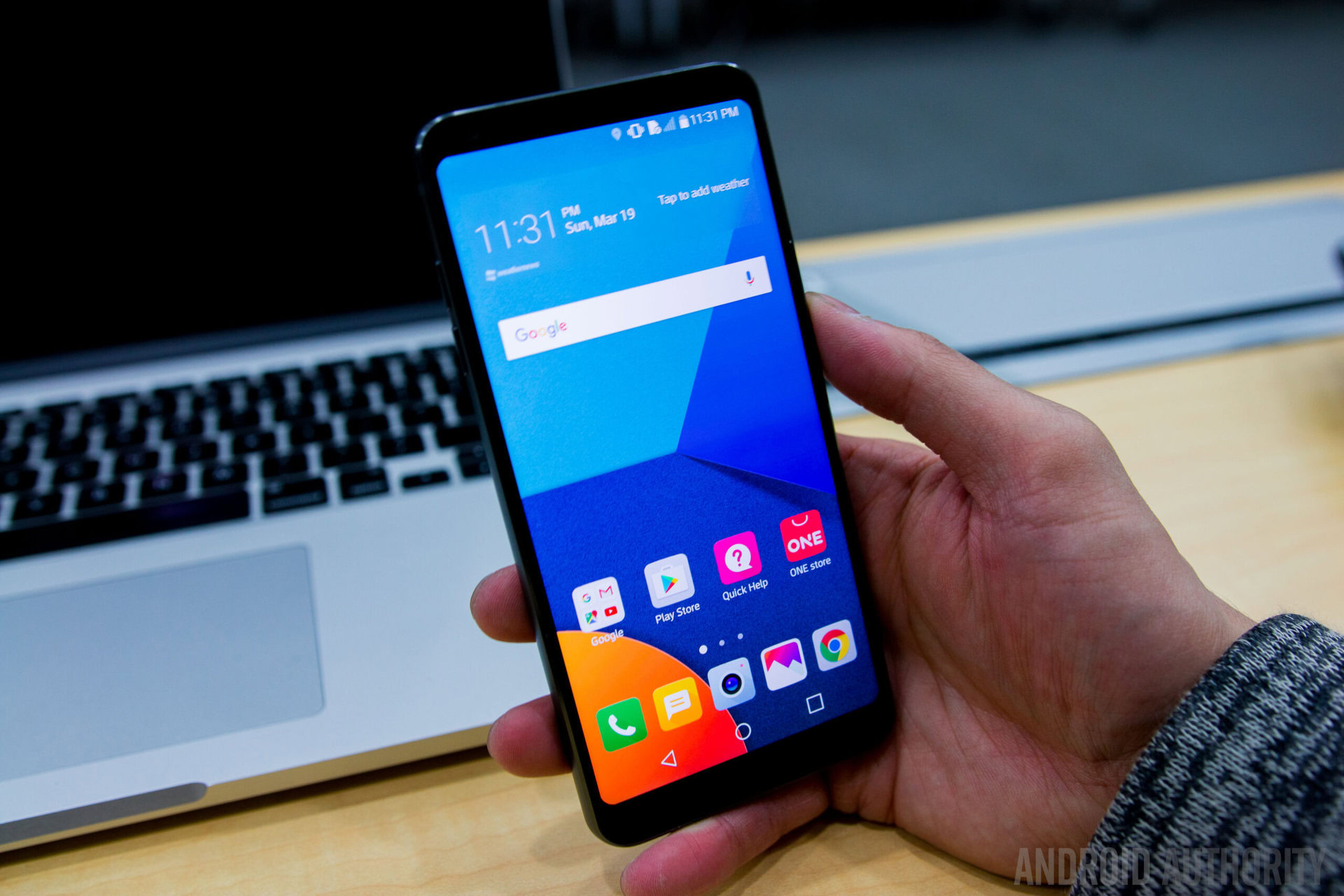Affiliate links on Android Authority may earn us a commission. Learn more.
What ever happened to LG's NUCLUN processors?


Towards the end of 2014 LG announced its first mobile System-on-a-Chip (SoC), the octa-core NUCLUN. The chip debuted in the LG G3 Screen, a smartphone developed specifically for the Korean market, but since then it hasn’t been used in any smartphones.
At the time of its release LG was quite buoyant about the benefits of building its own SoC. “NUCLUN opens up a new chapter in LG’s history of innovation in the mobile industry,” said Dr. Jong-seok Park, head of LG Mobile. “With this in-house solution, we will be able to achieve better vertical integration and further diversity our product strategy against stronger competition. NUCLUN will give us greater flexibility in our mobile strategy going forward.”
So what happened?
The NUCLUN (pronounced NOO-klun) was designed using ARM’s big.LITTLE technology with four 1.5GHz Cortex-A15 cores and four 1.2GHz Cortex-A7 cores. The chip also included a CAT 6 4G modem and an PowerVR GPU from Imagination. For 2014, that was a reasonable setup, however not a flagship setup as the 2013 Samsung Galaxy S4 had a similar SoC configuration.
A year later towards the end of 2015 rumors started to circulate that LG was working on its second generation NUCLUN SoC. Dubbed the NUCLUN 2 it was suggested that the new chip would keep its octa-core heritage, however it would make the jump from 32-bit to 64-bit by using four ARM Cortex-A72 cores and four Cortex-A53 CPU cores. It was also suggested that LG Electronics was working with Intel Foundry to build the new chip on a 14nm FinFET manufacturing process and simultaneously working with TSMC on a 16nm version. Either of which would be a notable improvement over the 28nm process used for the first chip.
By the end of 2015 the rumors had reached full speed and it was thought that the NUCLUN 2 would be used in the LG V20. However, nine months later the V20 was launched with the Qualcomm Snapdragon 820.
But just before the launch of the V20, ARM and Intel Custom Foundry announced an agreement to accelerate the development and implementation of ARM SoCs on Intel’s 10nm manufacturing process. As part of that announcement ARM said that the initial agreement covers the manufacture of “two future advanced ARM Cortex-A processor cores designed for mobile computing applications in either ARM big.LITTLE™ or stand-alone configurations.”

The key to understanding the above statement is that it tells us about two yet unreleased (i.e. future) Cortex-A cores that will be built on 10nm. Why two? Because processors in a big.LITTLE configuration need use the exactly the same ARM architecture revision. The only reason to release two new Cortex-A designs simultaneously is when a new architecture revision is being used.
At the time of the announcement I said, “In a nutshell, ARM’s current 64 bit CPUs use the ARM v8 architecture. However there are revisions known as v8.1 and v8.2. big.LITTLE needs the CPU cores to use the same architecture revision. The sentence above hints that ARM will release a new big CPU and a new LITTLE CPU at the same time on 10nm using, I guess, the latest architecture revision.”
Now that the ARM Cortex-A75 and the ARM Cortex-A55 have been launched we can see that my prediction was correct. But what of LG? In the same announcement Intel also said that LG will produce “a world-class mobile platform based on Intel Custom Foundry’s 10nm design platform.”
Since the only core designs being built by Intel on 10nm are the Cortex-A75 and the Cortex-A55 then it follows that LG’s next SoC will use these new ARM cores.
Why the LG G6 didn’t use the Snapdragon 835
LG doesn’t exclusively use Qualcomm’s chips. Quite a number of its mid-range device use MediaTek processors including the LG Stylo 3. However for the high-end LG needs Qualcomm’s offerings, mainly because it has no alternative. In fact it can be argued that a lack of alternatives to Qualcomm is hurting the ecosystem.
If you look at the other major handset makers you will see that they all make their own mobile processors. Samsung has its Exynos range, while HUAWEI has its Kirin line. Everyone else has to use either Qualcomm or MediaTek.

The LG G6 didn’t ship with the Snapdragon 835 but instead with the 2016 Snapdragon 821. Many people found this surprising as it was assumed that all the flagships devices using a Qualcomm processor would use the 835. However you need to take into account the timing of the G6’s launch.
Although the first 835 chips were available by time the LG6 hit the shelves, it takes months to ramp up production of these premium handsets, which meant that LG needed the processor parts before the Snapdragon 835 was available in quantity.
Since meaningful volume production of the Snapdragon 835 was not available to LG before the planned launch of the G6 then LG either had to go with the Snapdragon 821 or delay the launch of the G6 for two, three, maybe even four months. However it is now assumed that since the Snapdragon 835 is in full production that it will be used in in the LG V30, or whatever LG calls its mid-season V20 successor.
Such a reliance on Qualcomm could be seen as a problem for LG, especially since this isn’t the first time that LG had to opt for a different processor due to problems with Qualcomm’s leading offering. Remember how LG cleverly avoided the whole Snapdragon 810 overheating drama by opting for the 808 in the LG G4?
The solution for LG is to make its own processor (again), just like HUAWEI and Samsung.
Naming and timing
So, we know that LG is making a Cortex-A75 / Cortex-A55 based processor using Intel’s 10nm process. There are no current clues about the GPU, however it makes sense for LG to go with the ARM Mali-G72, since it was also announced at the same time as the two new processor cores. In fact, it is easiest for LG to use as many ARM designs as it can in its new processor as ARM can provide a complete SoC solution (CPU, GPU, Video processor, Display processor, Image Signal Processor, etc), along with all the system integration services.
It seems that the NUCLUN 2 did actually make it to silicon, however it was never used in any devices, remember that it is now 2.5 years since the NUCLUN 1 appeared. So it is likely that the new LG SoC will be either called the NUCLUN 3 or LG will adopt a new naming scheme, probably still based on the NUCLUN brand but with a more complex structure, something like the NUCLUN 300, or whatever.
But why didn’t the NUCLUN 2 ever see the light of day? One possible answer is because LG may have received tax breaks or tax incentives to build a processor research lab from the Korean government, and as such it needed to actually make something, but not necessarily ship any products using the designs that came from the lab. LG has received help from the Korean government before, most notably with its OLED business. It is interesting to note that the original NUCLUN only appeared in one device, one developed specifically for the Korean market and not sold anywhere else! However such tax breaks are, at the moment, just a speculation, but if true it seems that any new NUCLUN processors would certainly justify the costs, especially if it ends up in a popular handset or two.

There remains however one big problem for LG, and that is Intel’s 10nm process. At the time of writing Intel has not shipped any 10nm chips, not even for itself, let alone for any of its Foundry clients.
The current rumor mill suggests that we won’t see any PC type end-products shipping with Intel based 10nm chips until the end of this year (2017) and some people are suggesting that this could slip into 2018. That means that if Intel are putting the demands of its customers like LG on a equal footing with its own internal demands (and it probably isn’t doing that) then LG’s mobile processor won’t be available until the end of 2017.
That means that LG might not get development samples in time for the LG G7. If Qualcomm isn’t able to supply LG with its next generation of Snapdragon processor in a time frame that meets LG’s development cycle, then the G7 might use the Snapdragon 835, in a similar way to how the G6 used the Snapdragon 821. However there would be hope for the LG V40.
But there are reports that LG and Qualcomm are already working together to make sure that the rumored Snapdragon 845 will be available for the G7. This means that if all this supposition is correct then the V30 will use the Snapdragon 835, the G7 will use the Qualcomm SoC that comes after the Snapdragon 835 (the Snapdragon 845?), and the LG V40 will use the new Intel made NUCLUN.
Wrap-up
One aspect that I haven’t touched on is the LTE modem for the new NUCLUN. Whose LTE modem will LG incorporate in to the new processor? Qualcomm’s? Intel’s? Probably the latter and it was likely part of the deal between LG and Intel.
What do you think? Is this just pie-in-the-sky thinking or do the clues point to LG moving away from Qualcomm for its flagship devices?